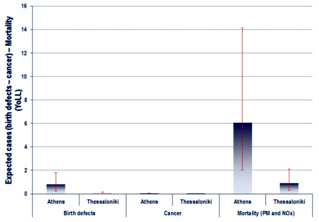The Case Study Of Municipal Waste Management
Waste has always been associated with human activity and is a necessary evil in any developmental process. Nowadays, the diversity and sheer quantity of wastes generated by industries and municipalities pose serious risks to both human health and the environment.
It is imperative therefore to use and create awareness among local authorities, manufacturers, companies and generally society of the available varied technologies evolved to treat and recycle wastes and convert it to wealth.
In particular municipal solid waste (MSW) management is regulated though a number of general principles and international directives encouraging prevention, recycling, treatment and final disposal. Life cycle assessment (LCA) is a system analysis tool used to describe the environmental impacts of products and processes while assessing the material and energy flows throughout their lifetime. The basic phases of an LCA are the collection of the data on all environmental interventions in the unit processes (inventory phase), the conversion of inventory data into environmental effects (impact assessment phase) and the interpretation of the results in relation to the objectives of the study. MSW streams of Athens and Thessaloniki and waste management technology feature have analyzed by using LCA. Hence, alternatives scenarios solutions have compared with that current situation in order to meet the twin goals of human and environmental conservation and sustainable development.

Figure 1. Waste management scenario: Waste is pre-treated and pre-sorted into biodegradable and non-biodegradable material for further anaerobic digestion and composting. Residues end in landfill. Plastic, paper and ferrous material are recycled.
The comparative LCA for the current situation and alternatives solutions has enhanced and supported with material flow accounting, gross energy requirement, emergy intensity, emission and release intensity and morbidity or mortality indicators.

Figure 2. Life cycle assessment is conducted according to ISO 14040 series.
However, not all options are equally benign to the local environment and to the health of the local population, since both the former and the latter are still affected by non-negligible local emissions. With regard to public health impacts, adverse effects on respiratory health, congenital malformations, low birth weight and cancer incidence were estimated Figure 3.

Figure 3. Health impact assessment of main MSW options.
A significant and not intuitive result is the fact that life cycle analysis produces different conclusions than a simple environmental impact assessment based only on estimated or measured emissions. Taking into account the overall life cycle of both the waste streams and of the technological systems and facilities envisaged under the plausible scenarios analyzed herein, alters the relative attractiveness of the solutions considered. Furthermore, waste treatments leading to energy recovery provide an energy output that, in the best case, is able to meet a significant but not high percentage of the urban power demand.



